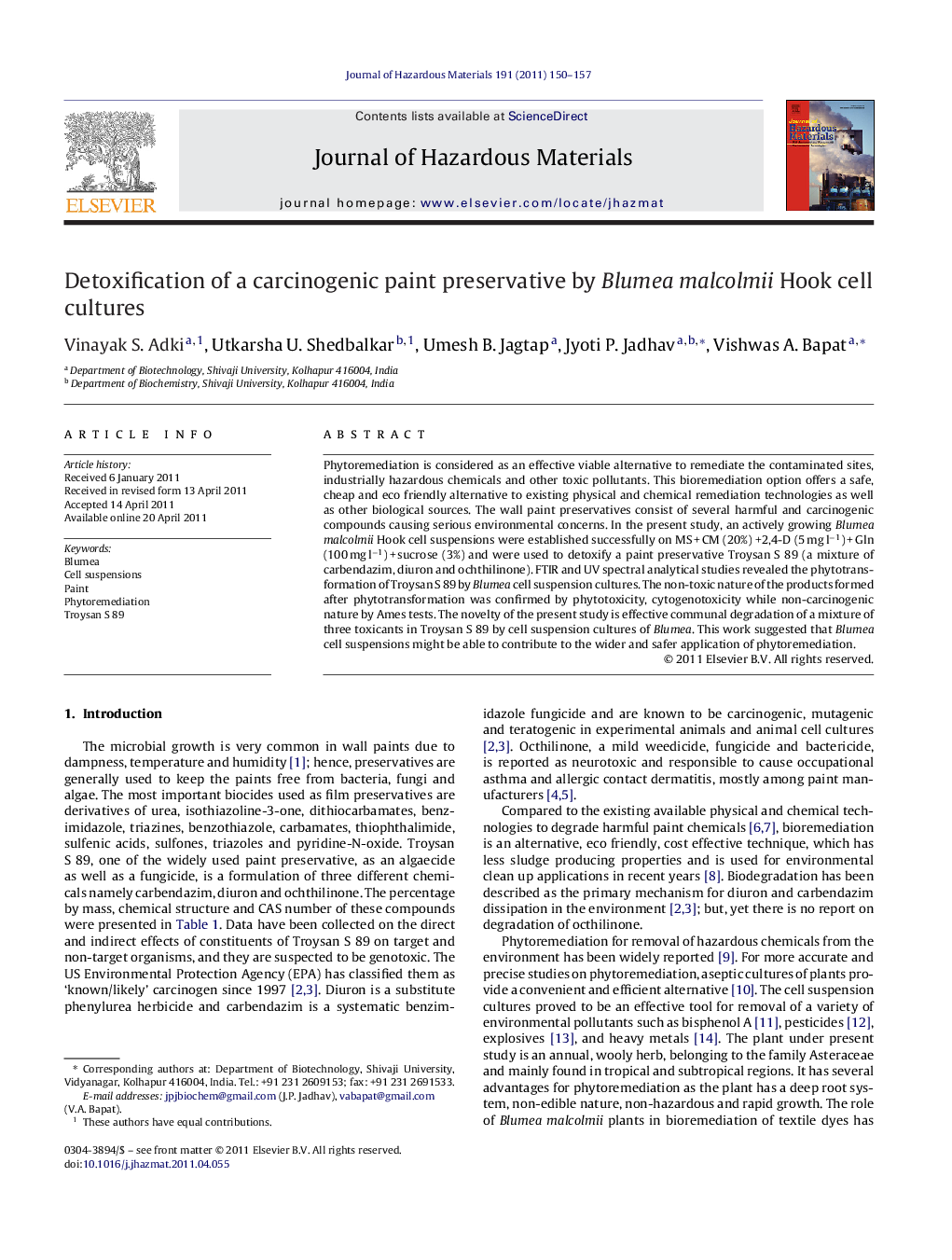| Article ID | Journal | Published Year | Pages | File Type |
|---|---|---|---|---|
| 578792 | Journal of Hazardous Materials | 2011 | 8 Pages |
Abstract
Phytoremediation is considered as an effective viable alternative to remediate the contaminated sites, industrially hazardous chemicals and other toxic pollutants. This bioremediation option offers a safe, cheap and eco friendly alternative to existing physical and chemical remediation technologies as well as other biological sources. The wall paint preservatives consist of several harmful and carcinogenic compounds causing serious environmental concerns. In the present study, an actively growing Blumea malcolmii Hook cell suspensions were established successfully on MS + CM (20%) +2,4-D (5 mg lâ1) + Gln (100 mg lâ1) + sucrose (3%) and were used to detoxify a paint preservative Troysan S 89 (a mixture of carbendazim, diuron and ochthilinone). FTIR and UV spectral analytical studies revealed the phytotransformation of Troysan S 89 by Blumea cell suspension cultures. The non-toxic nature of the products formed after phytotransformation was confirmed by phytotoxicity, cytogenotoxicity while non-carcinogenic nature by Ames tests. The novelty of the present study is effective communal degradation of a mixture of three toxicants in Troysan S 89 by cell suspension cultures of Blumea. This work suggested that Blumea cell suspensions might be able to contribute to the wider and safer application of phytoremediation.
Related Topics
Physical Sciences and Engineering
Chemical Engineering
Chemical Health and Safety
Authors
Vinayak S. Adki, Utkarsha U. Shedbalkar, Umesh B. Jagtap, Jyoti P. Jadhav, Vishwas A. Bapat,
